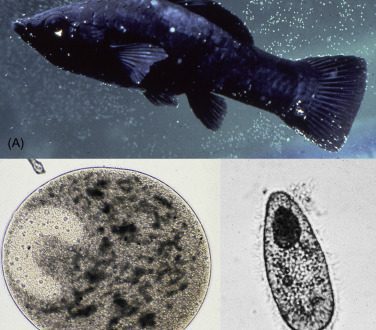
Nematodes
Nematodes is the common name for roundworms, some of which are parasites. The most common nematodes that live in the intestines of fish, they feed on undigested food particles.
As a rule, the entire life cycle takes place in one host, and the eggs go out along with the excrement and are carried around the aquarium.
Symptoms:
Most fish are carriers of a small number of trematodes that do not manifest themselves in any way. In the case of a severe infection, the belly of the fish becomes sunken, despite good nutrition. A clear sign when worms begin to hang from the anus.
Causes of parasites:
Parasites enter the aquarium together with live food or with infected fish, in some cases the carriers are snails, which serve as an intermediate host for some types of nematodes.
Infection of fish occurs through the eggs of parasites that enter the water along with excrement, which the inhabitants of the aquarium often swallow, breaking the ground.
Prevention:
Timely cleaning of the aquarium from the waste products of fish (excrement) will reduce the risk of the spread of parasites inside the aquarium. Nematodes can get into the aquarium along with live food or snails, but if you buy them in pet stores, and not get them in natural reservoirs, then the likelihood of infection becomes minimal.
Treatment:
An effective drug that can be purchased at any pharmacy is piperazine. Available in the form of tablets (1 tablet – 0.5 gr.) or solution. The medicine must be mixed with food in proportions per 200 g of food 1 tablet.
Crack the tablet to a powder and mix with food, preferably slightly moist, for this reason you should not cook a lot of food, it may go bad. Feed the fish exclusively with food prepared with medicine for 7–10 days.





